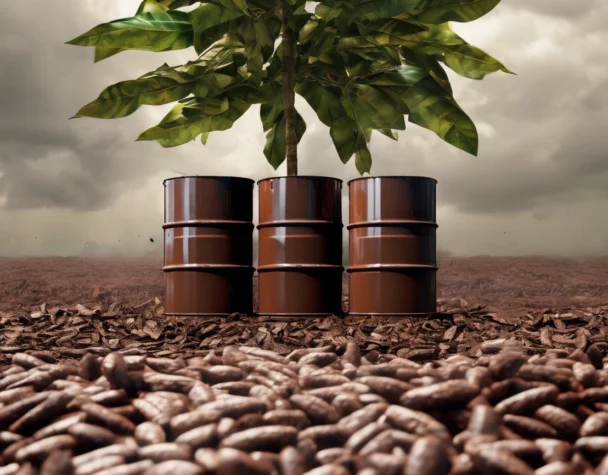
Oil Price Uncertainty and Cocoa Crisis Redefine Global Trade Dynamics
Fri, May 02, 2025Oil and Metals React to Demand Slowdown and Policy Signals
As of early May 2025, the international energy sector is adjusting to a fresh bout of uncertainty. Crude oil prices have stabilized after a sharp decline, with Brent crude trading around $61 per barrel and West Texas Intermediate (WTI) at $58.09. These levels represent multi-year lows not seen since 2021. The downturn was largely triggered by signs of weakening demand, especially following news that the U.S. economy contracted by 0.3% in the first quarter—its first decline in three years.
In parallel, Saudi Arabia and select OPEC+ members are reportedly considering increased output in the upcoming June meeting. The Saudi energy ministry has suggested that the kingdom is prepared to withstand a prolonged period of lower oil prices without cutting production. This strategic posture reflects an effort to preserve market share, even at the cost of revenues, complicating the price outlook for the second half of 2025. (source)
Precious metals have also come under pressure. Gold prices have retreated for the third consecutive session, reaching a two-week low. Contributing factors include easing geopolitical tensions and reduced trading volume during the Chinese May Day holiday. Investors are closely watching upcoming U.S. payroll figures, which may influence expectations around interest rates and the strength of the dollar. (source)
Soft Commodity Prices Surge Amid West African Crop Failures
A significant development in the agricultural sector is the ongoing cocoa crisis. Poor weather conditions, fungal diseases, and aging trees in key producing countries like Ghana and Côte d’Ivoire have decimated crop yields. London cocoa futures skyrocketed to over $11,500 per tonne in mid-2024—nearly quadrupling from their previous year’s average. Although prices have slightly eased since, they remain historically elevated, squeezing profit margins for chocolate producers and driving up retail prices globally. (source)
Amid these disruptions, the World Bank has released a forecast predicting a broad decline in overall commodity prices. The institution expects prices to fall by 12% in 2025 and an additional 5% in 2026, driven by weakening global demand and adjustments in supply. While this outlook may help ease inflation in importing countries, it raises concerns for developing economies that rely heavily on resource exports. (source)
Adding to the complexity, trade tensions between the U.S. and China—particularly around tariff enforcement—continue to affect commodity flows. The uncertainty surrounding future trade policies and their ripple effects on logistics and pricing means commodity markets are likely to remain volatile in the coming quarters. For businesses and policymakers alike, the focus must now shift to resilience strategies and diversification to withstand these shifting pressures.

